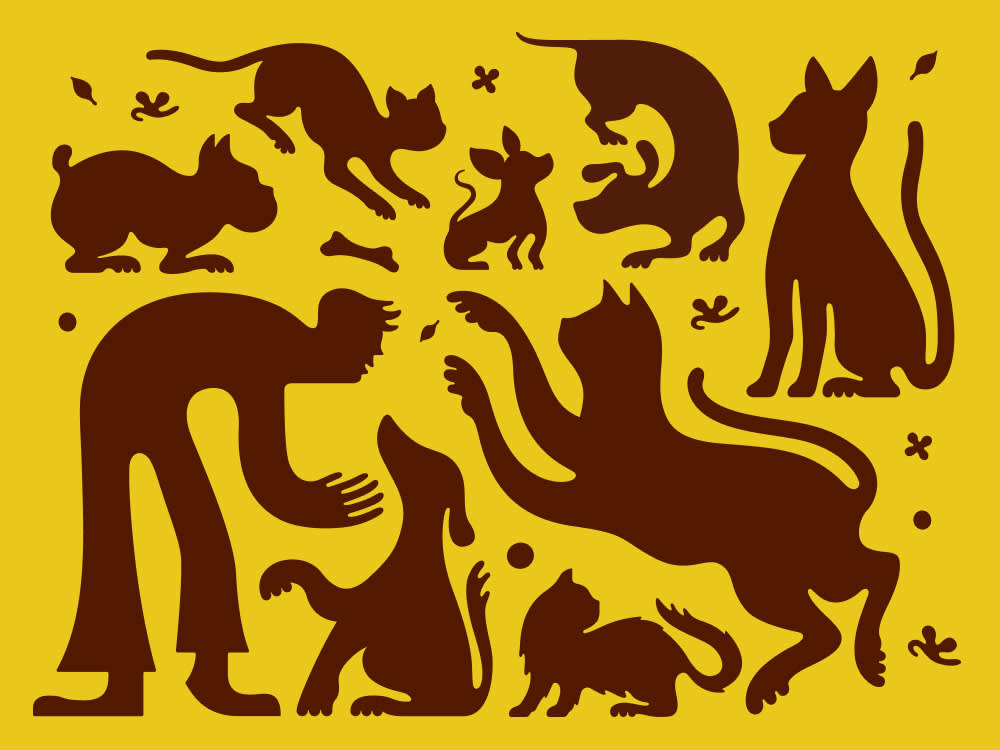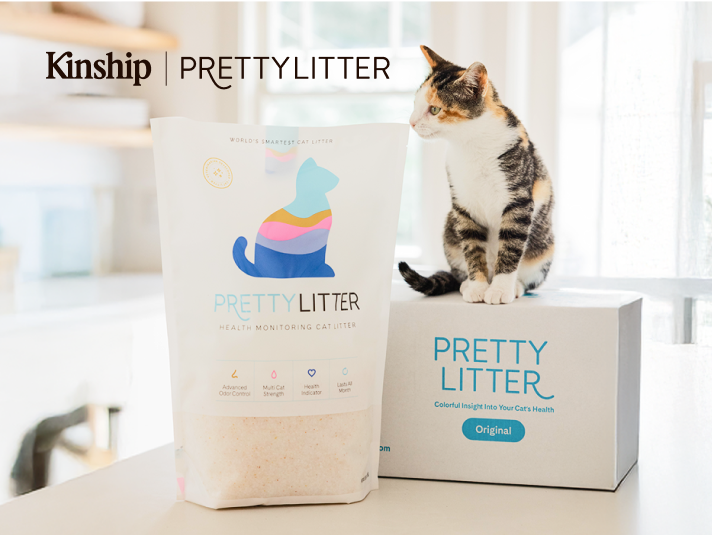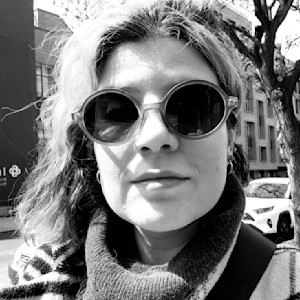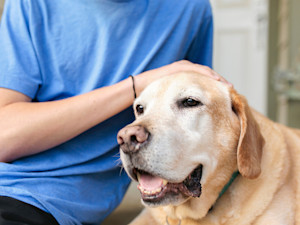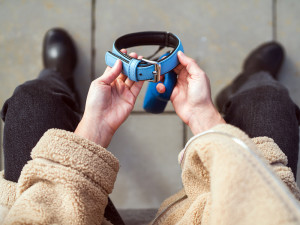Inside the Wild and Controversial World of Pet Cloning
Would you pay $50,000 for a doggie duplicate? For some grieving pet parents, it’s a no-brainer—even while shelters remain overcrowded.
Kelly Anderson never planned to clone her cat. In fact, she didn’t even know that cat cloning was a thing until about three weeks before her beloved kitty, Chai, passed away. But on that fateful night when it happened, she remembered a conversation she’d shared with her roommate, a vet tech, before Chai had suddenly gotten sick.
“It was just one of those conversations like, ‘Oh, wow, that's crazy — I didn't know that you could clone animals,’” Anderson recalls. She’d thought nothing of it at first, but it came back to her while she grieved Chai.
Save on the litter with color-changing tech that helps you better care for your cat.
Right after Chai’s death, Anderson rushed to do research, contacted the Texas-based animal cloning company ViaGen Pets & Equine,opens in a new tab and began the process of harvesting and storing Chai’s DNA. It was an in-the-moment decision, she says, and ultimately, she paid $25,000 to create her cat’s genetic twin, Belle, whom she’s had for four years.
As wild as Anderson’s story might sound to some, pet cloning has become increasingly popular among a certain set of ultra-devoted pet parents. It’s not just for celebrities like Barbra Streisandopens in a new tab and Diane von Furstenbergopens in a new tab anymore, either. Lawyers in California opens in a new tab have done it and so has a mineral prospector in Canadaopens in a new tab. Anderson says she took out a loan to clone Chai.
ViaGen business manager Lauren Aston says that the company has a waiting list for all three of the animals it clones: cats, dogs, and horses. The price of cloning a dog or cat has risen since Anderson decided to take the leap. ViaGen now charges $50,000 for each, and a cloned horse will cost you $80,000. ViaGen is one of the only companies in the world to allow pet parents to pay to clone their dogs, along with Sooam Biotech in South Korea.
To Anderson, an animal lover who trains dogs and has fostered neonatal kittens for 15 years with organizations like Austin Pets Alive!, the five-figure investment was absolutely worth it. Her family was not surprised to hear about her decision, either. “If anyone is going to do something like this,” she recalls them saying, “it’s going to be you.”
As an adoption-forward publication, it’s more than fair raise a couple eyebrows (to put it lightly) on this process. The post-COVID crisis of overflowing animal shelteropens in a new tab s, leading to even designer dogsopens in a new tab ending up available for adoption. We delve into how the process works — and why animal advocates are understandably not happy about it.
First of all, how does pet cloning even happen?
The cloning process is relatively straightforward. As Aston explains, you first need a cell culture to capture the animal’s DNA. ViaGen collects a small skin sample through a noninvasive procedure that Aston compares to mole removal. “We've got thousands and thousands of clients that just do that,” Aston says. “Just store the DNA for whatever their reason is.”
For some pet parents, Aston says, storing DNA gives peace of mind and allows a pet to live on, in some form, forever. Some keep the DNA in hopes that cloning could one day become less expensive. ViaGen charges $1,600 up front plus another $150 per year for storage.
To produce a clone from the DNA sample, scientists extract all DNA from a donor egg and implant a single cell from the animal they’re cloning. No sperm is needed; the egg begins to grow, dividing and multiplying into an embryo that ViaGen transfers into a surrogate mother. From there, Aston says, everything unfolds like a normal pregnancy, right down to the delivery.
Although the science has existed for decades, cloning is still a relatively new field. Dolly the Sheepopens in a new tab, widely considered the first cloned mammal, made her debut in 1996. The world’s first cloned pet, the cheekily named CC (short for Copy Cat), took center stage in 2001, and it wasn’t until 2005 that Sooam produced the first cloned dog, Snuppyopens in a new tab. Although pet cloning is more mainstream now than it was a decade ago, the industry is still pretty boutique; in addition to ViaGen and its U.K.-based partner, Gemini Geneticsopens in a new tab.
There is obvious controversy involved here.
As with any newer innovation, cloning has its supporters and detractors. In 2018, as discussion of Barbra Streisand cloning her dog Samantha went viral, Ingrid Newkirk — president of the animal-rights group People for the Ethical Treatment of Animals (PETA) — put out a statementopens in a new tab condemning the practice.
“We all want our beloved dogs to live forever, but while it may sound like a good idea, cloning doesn’t achieve that,” Newkirk said at the time. “Instead, it creates a new and different dog who has only the physical characteristics of the original.”
Newkirk further claimed that cloning “has a high failure rate” and added that “when you consider that millions of wonderful adoptable dogs are languishing in animal shelters every year or dying in terrifying ways when abandoned, you realize that cloning adds to the homeless-animal population crisis.”
PETA isn’t the only animal-rights group to cry foul on cloning. The American Society for the Prevention of Cruelty to Animals (ASPCA) has called for a moratoriumopens in a new tab on the research, promotion and sale of cloned pets. In arguing for the halt, the ASPCA claimed that past reports had “indicated a variety of anatomical and physiological problems” associated with animals produced via cloning.
Because a lot of companion-animal cloning research and activity occurs within private companies, the ASPCA argues, it’s hard to fully document the consequences. During the proposed hiatus, the ASPCA suggests, a multidisciplinary commission could evaluate the industry and create a detailed report that would serve as a foundation for new guidelines and regulations.
What does ViaGen have to say about this?
When asked about PETA’s claims, Aston says that ViaGen supports animal adoption and noted that many of the animals whose DNA they store were adopted from shelters. Because many adopted animals are mixed breed, she says, many pet parents cannot easily find another animal that looks like them or shares their genetic traits.
“We are not like puppy mills pumping out animals without a home in mind,” Aston says. Instead, she adds, every animal that ViaGen clones has been specifically requested, and the company’s contract ensures that clients assume responsibility for all animals born in a litter — usually one or two.
Aston also denies the allegedly high failure rate and said that while that might have been accurate 25 years ago, it’s no longer the case. “We’ve learned so much more about the reproductive systems of these animals over the past 20 something years,” she said, and so “the technology has improved.”
Finally, Aston adds that ViaGen is overseen by the USDA and has never failed an inspection. Publicly available USDA records indicate that the company has been inspected twice (once in 2017 and once in 2018) and faced zero compliance issues. According to Aston, a third-party veterinarian performs a health inspection for each animal the company produces.
Pet parents have their own perspective here, too.
For Anderson, who cloned Chai back in 2017, the process took four years from start to finish. When Chai died in March of 2017, her veterinarian was able to collect a DNA sample, which a courier brought to ViaGen. It took roughly four weeks to confirm whether or not the cells would be viable — a stressful time for Anderson, who worried that her cat being frozen overnight at the vet’s office might have killed off the cells. Once the cells were confirmed viable, the waiting game began again — this time for four years. “But I stuck through it,” she says, “and it was entirely worth it.” Belle was born in October of 2021.
When asked how she would describe getting to know a clone of her beloved cat, Anderson chose the exact word you’d expect: surreal. As one might expect, Anderson was at first preoccupied with seeing how Belle compared to Chai. Over time, however, she got to know her for who she was.
“I knew they'd be pretty different, because Chai was very sick as a kitten when I got her,” Anderson says. “Not from anything genetic that would be passed on, but just viral and bacterial illnesses. She was isolated and quarantined as a kitten and was very standoffish to most people because of it.”
Belle, who got to visit a pumpkin patch with Anderson on the first day she came home, had a much more idyllic start to life. As Anderson puts it, “She was born into the world curious and outgoing and very different from Chai.” Still, Anderson notes, there are some similarities between the two cats. Sometimes, Belle will cuddle against her back in the same “weird way” Chai once did. She’s also supported Anderson through tough emotional times, much like Chai.
“I used to struggle with depression, and Chai was always there to console me in my darkest moments,” Anderson says. More recently, she’s been doing well with the help of new medication. But over the past month or so, she’s been having an emotional time, and as Belle steps up to console her.
“I was crying one night, and she came up and cuddled with me, and she's just not a cuddly cat by nature,” Anderson says. “Cuddling is a rare good thing from her, and Chai wasn’t cuddly by nature either. So that really means something to me.”
Belle’s origin story isn’t the only thing that sets her apart from most cats. She’s also got a slew of followers online — more than 88,000 on Instagramopens in a new tab and 141,800 on TikTokopens in a new tab. And like most social media stars, she’s proven controversial.
For some, Belle’s channels are educational. According to Anderson, multiple students have reached out to tell her they’re writing school essays about her TikTok account, or that she’s taught them about cloning. But while those who had been following Chai’s journey on Instagram were largely supportive, Anderson says she’s faced her fair share of “keyboard warriors” who judge without knowing her full story.
“I get a lot of people who are [believers in] ‘adopt, don't shop’ and think that I should have adopted instead of cloning, or that I should have donated all of my money instead of cloning,” Anderson says — noting that because she took out a lone, “this is not money that I could have thrown around at anything.” At the end of the day, she figures, “I just have to accept that it's a controversial topic, and if I want to talk about it online, I have to be thick skinned.”
More than anything, Anderson believes that people who choose to clone do so because they are so closely bonded to their pets. Often, she points out, many people who do this choose to do so because of loss. Ultimately, she says, “I just think that it comes from a place of love.”
